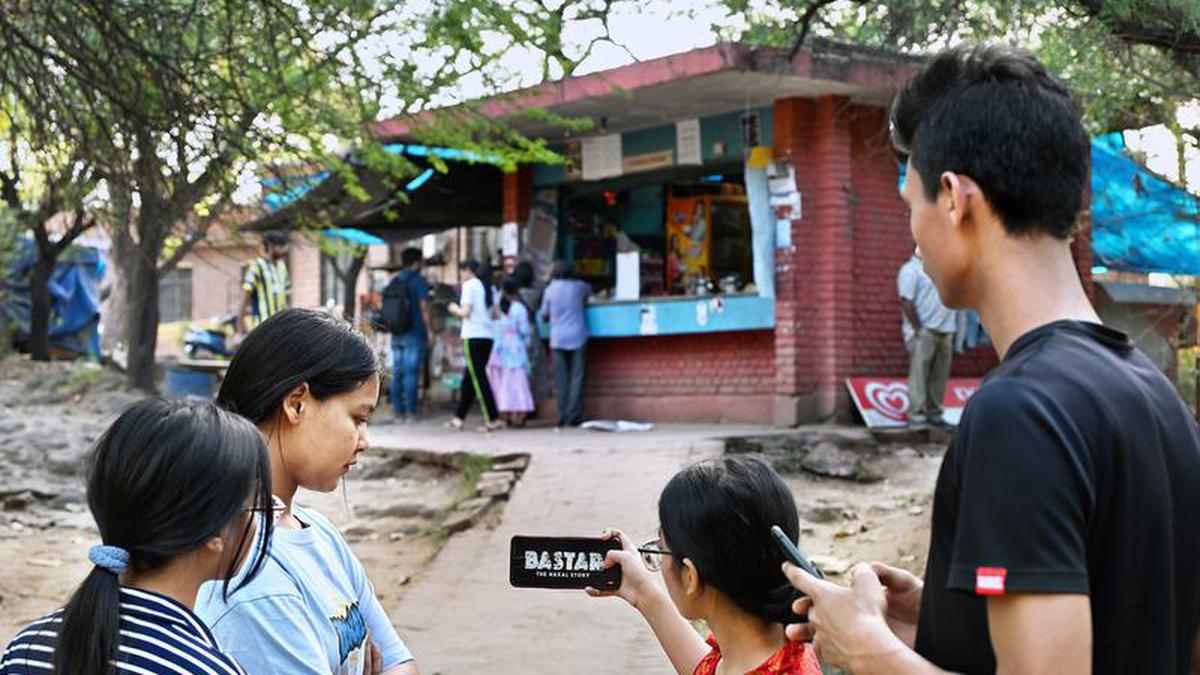
New narrative around JNU poses a challenge to intellectual freedom and opportunity
The Hindu
JNU's political consciousness and student activism are portrayed in a web series and films, sparking controversy and protests.
On April 10, the day World QS rankings declared Delhi’s Jawaharlal Nehru University (JNU) as India’s top-ranked university, JNU’s Narmada hostel lights up at 9 p.m. As students eat dinner in the mess and wrap up for the night, two young men use markers to write ‘Hastinapur University’ on chart paper stuck in front of the hostel. Three vans with film equipment are parked outside and dozens of actors are getting ready for the shooting of a web series by filmmaker Sudhir Mishra on students during India’s Emergency.
A group of five first-year students from the Centre of Russian Studies walks past the shoot location, but what piques their interest is the activity in the building opposite the hostel — the office of the university’s student union (JNUSU). Here, the All India Students Association (AISA) is holding a public hearing on what it believes is the commercialisation of the campus. The students sit on the steps of the building and listen in. Inside, about 30 people are in the audience as Sucheta De, CPI(ML) member and former JNUSU president, speaks about how JNU is a “blend of worlds and experiences” and that there are concerted attempts to change what it stands for.
As the five students, from different parts of the country, discuss the shooting of the web series, the conversation quickly segues into the new narrative being built around JNU. They talk about how this had almost prevented their families from letting them take admission here. One of them says, “JNU ke baahar jao, toh log antankwadi bulana shuru kar lete hai (When we step out of campus, people start calling us terrorists).”
Established in 1969, JNU is spread across over 1,000 acres, with 10 schools and 18 hostels constructed in the exposed-brick style. Students and teachers believe that the university is politically conscious as it fosters a culture of discussion and debate, both inside the classroom and outside, in its green spaces and dhabas.
On its website, the university says it is a “world-renowned centre for teaching and research” that follows a “somewhat unorthodox academic structure”. At the heart of the conflict between JNU’s external perception and its internal workings are two Hindi films the university features in: Bastar: The Naxal Story, which released in March, and JNU: Jahangir National University, slated to hit theatres soon.
Bastar was marketed as based on real-life incidents from the Maoist insurgency in Chhattisgarh’s Bastar. In the trailer, actor Adah Sharma, who plays an IPS officer, mentions in a speech that 15,000 jawans had been killed by Naxalites. She adds that the massacre of 76 soldiers of the Central Reserve Police Force was celebrated in JNU. “Imagine... that such a prestigious university celebrates the killing of our jawans. Where does this thought process come from?” she says.
The poster for Jahangir National University features the tag line, “Can one educational institution break the nation?”, with a visual of a map of India painted saffron being crushed in a hand.













